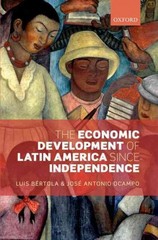Answer all the questions below.
(ii) Show that the partial log-likelihood function can be written in the form: ((k) = 8log - 6 log(0.75+k) - 2 log(0.8 +k) -5 log(1 +k) + constant [4] (iii) An initial estimate of k, the maximum likelihood estimate of & , is 1.4. Use one iteration of the Newton-Raphson method to obtain an improved estimate of . [3] The Newton-Raphson method uses the fact that if x is a good initial approximation to a root of the equation S(x) =0, then x=x- f(x) is f'(x) usually a better approximation. (iv) Assuming that your estimate obtained in (iii) is accurate, evaluate ("(k) and hence carry out an approximate test to determine whether the rates 1 () are different for males and females. [4] (v) On the assumption that the hazard rates do not differ according to sex, estimate the median time until symptoms disappear using the Nelson-Aalen method. [3] [Total 16]A medical researcher is investigating the time it takes for their symptoms to disappear after patients start taking a particular drug. The results of a pilot study of 6 men and 8 women were as follows: Day on which symptoms disappeared Males: 3, 2, 6, 15, 6, 2 Females: 5, 2, 2, 3, 7, 2, 6, 6 The researcher is using the following proportional hazards model to describe the hazard rate at time / (measured in days from commencement of treatment) for the /th individual: 4 (1) = 1(1)XK Here 1(1) denotes the baseline hazard rate at time r and x, encodes the sex of the / th individual, with x, =0 for a male and x, = 1 for a female. (i) Without carrying out any calculations, state how the sample mean and standard deviation of the times taken for symptoms to disappear could be used to gauge whether the baseline hazard rate is approximately constant. [2]An investor has to pay a lump sum of $20,000 at the end of fifteen years from now and an annuity certain of $5,000 per annum payable half-yearly in advance for twenty-five years, starting in ten years' time. The investor currently holds an amount of cash equal to the present value of these two liabilities valued at an effective rate of interest of 7% per annum. The investor wishes to immunise her fund against small movements in the rate of interest by investing the cash in two zero coupon bonds, Bond X and Bond Y. The market prices of both bonds are calculated at an effective rate of interest of 7% per annum. The investor has decided to invest an amount in Bond X sufficient to provide a capital sum of (25,000 when Bond X is redeemed in ten years' time. The remainder of the cash is invested in Bond Y. In order to immunise her holdings: (i) calculate the amount of money invested in Bond Y, and [5] (ii) determine the term needed for Bond ) and the redemption amount payable on the maturity date. [10] (iii) Without doing any further calculations, state which other condition needs to be satisfied for immunisation to be achieved successfully. [2] [Total 17]









